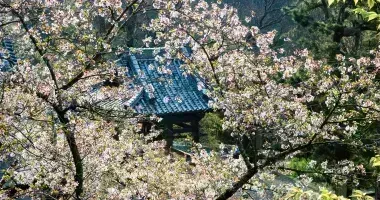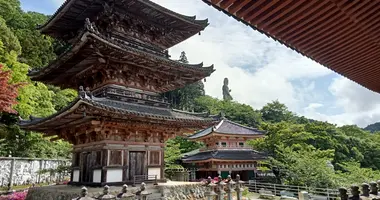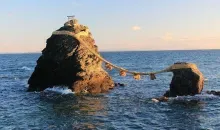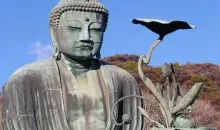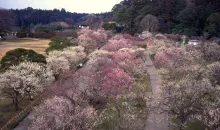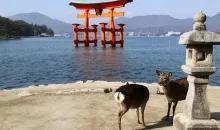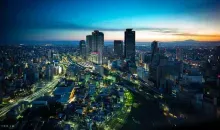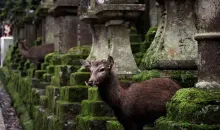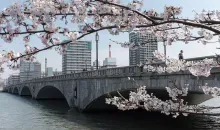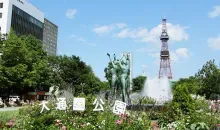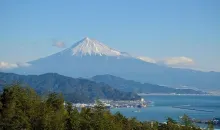Sendai
- Published on : 27/06/2025
- by : G.L. / I.D.O.
- Youtube
Local Time 10:52
Symbol : sunny_cloudy
Temp : 0.4°C
Date : Friday
Symbol : sunny_cloudy
Temp : 3.3°C
Date : Today
Symbol : sunny_cloudy
Temp : 8.2°C
Date : Tomorrow
Symbol : sunny_cloudy
Temp : 1.6°C
Date : Monday
Local Time 10:52
Symbol : sunny_cloudy
Temp : 0.4°C
Date : Friday
Symbol : sunny_cloudy
Temp : 3.3°C
Date : Today
Symbol : sunny_cloudy
Temp : 8.2°C
Date : Tomorrow
Symbol : sunny_cloudy
Temp : 1.6°C
Date : Monday
The capital of Tôhoku and a must-see city in northern Japan
Located in northeastern Japan, Sendai is the capital of Miyagi Prefecture and the largest city in the Tohoku region. Nicknamed the "City of Trees", this metropolis of over a million inhabitants offers a perfect balance between urban modernity and a rich historical heritage. Founded in 1600 by the powerful feudal lord Date Masamune, nicknamed the "one-eyed dragon", Sendai is renowned for its remarkable architecture, unique cuisine and abundant green spaces. Whether you're interested in samurai history, local cuisine or simply looking for an ideal base from which to explore the Tohoku region, Sendai will charm you with its diversity and authenticity.
Sendai - A medieval history linked to Lord Masamune Date
His helmet adorned with a crescent moon, his black armor, his castle: in Sendai, everyone knows Masamune Date (1567-1636), the great lord who turned this small port into a prosperous city as soon as it was founded in 1601. An excellent military strategist, he inherited the head of the family at an early age and rapidly expanded his territory in the Tôhoku region. Masamune was also a great fan of Noh theater and calligraphy. The history and influence of the "One-Eyed Dragon" (nickname given to Masamune, who lost an eye as a child) can be discovered west of Sendai, on Kyogamine Hill.
The ancient castle, Aoba-jô, conceals magnificent period pieces behind its imposing watchtower and offers, in addition to its historic ruins, a spectacular panorama. Nearby, the Gokoku Shrine, affiliated to Tokyo's Yasukuni-jinja, houses a small museum dedicated to the military history of modern Japan.
What to see and do in Sendai
Sendai enjoys a cooler climate than the rest of the country during Japan's hot, humid summers, making it an ideal place to stay and explore the north of the country.
Sendai enjoys a cooler climate during Japan's famously hot and humid summers, making it an excellent base for adventure in the north of the country.
Sights and activities in and around Sendai include the Sendai Municipal Museum, the sumptuous Masamune Zuihoden Mausoleum, the ruins of Sendai Castle (Aoba-jô), the sculpture-lined Jozenji-dori street, and Matsushima Bay on the coast, dotted with picturesque islets. In the nearby mountains, the Zao Onsen captivates with its hot springs and spectacular views. Shiroishi Castle is about 50 minutes south by train.
Miyagi Stadium, located in Rifu, was one of the venues for the 2002 World Cup. It also hosted soccer matches at the 2020 Olympic Games.
Sendai attractions
The Zuihoden is the mausoleum of the powerful daimyo Masamune Date (pronounced Dah-teh). Its elaborate beauty is reminiscent of the Tokugawa mausoleum in Nikko.
The original, richly decorated 17th-century buildings were destroyed during the Second World War, but were fully restored in 1979.
Located at the top of a steep stone staircase in the heart of a forest, the site also includes the mausoleums of Tadamune Date and Tsunamune Date, the second and third successors of the patriarch of the Date clan.
Sendai Castle, also known as Aoba-jô, dates back to 1602, but all that remains today are its impressive stone walls and watchtower. The castle gardens offer a beautiful view of the city and an iconic statue of Masamune on horseback. The Aoba Castle Exhibition Hall features digital reconstructions of the castle in its heyday.
Sendai Toshogu Shrine, near Toshogu station on the JR Senzan line, was built by Tadamune Date in honor of Ieyasu Tokugawa, founder of the Tokugawa shogunate, and his renowned ally.
Rinno-ji temple boasts a three-storey pagoda and a promenade garden, which are the highlights of the visit. Founded in the 1440s, it was moved to its present location in the early 17th century. This is the temple of the Date family.
The Osaki Hachimangu shrine, founded by Masamune Date in 1607, is a national treasure. The main hall is decorated with black lacquer and gold leaf. Hachiman is considered a deity of war.
Komyo-ji temple, near Kita-Sendai station on the Senzan line, houses the tomb of Tsunenaga Hasekura (1571-1622), Masamune Date's ambassador to Mexico and Spain. In 1613, Hasekura sailed aboard the Date Maru to Acapulco via Luzon in the Philippines, before visiting Spain, Switzerland and Rome. His ship, with 150 to 180 men, was one of the first Japanese vessels to cross the Pacific. Baptized a Christian, Hasekura returned to Japan in 1620, although Christianity was outlawed by the Tokugawa regime at the time. His son, chief priest of Komyo-ji, and some of his servants were executed for their faith.
North-west of downtown Sendai, next to the Sendai Hills Hotel and Sendai Hills Golf Club, stands a modern statue of Kannon (Goddess of Mercy), 100 metres high.
The Ryuun-in temple, 5 km northwest of Sendai station, contains the tomb of Shihei Hayashi (1738-1793), an eminent military scholar whose writings inspired the movement leading to the end of the shogunate (Meiji Restoration) in 1867. A statue of Hayashi stands in Kotodai Park and a commemorative plaque in Aoba-jô.
Nishi-koen Park was once the residential district of samurai serving the Date clan. Tsutsujigaoka Park is famous for its ancient cherry trees, some of which are approaching 300 years old.
Getting to Sendai
By air
Air connections are available from Tokyo, Osaka, Sapporo, Nagoya, Fukuoka, Beijing, Seoul and other Asian destinations. Sendai airport is 18 km south of the city center and is served by bus (40 min) and train (17 min express service).
By train
The JR Tohoku Shinkansen frequently serves Sendai station from Tokyo (1h36 to 2h32). Sendai is also linked by train to Yamagata, Matsushima and Sendai airport.
By bus バスで
Daily bus services connect Sendai with Shinjuku (Tokyo) and Niigata, as well as night buses to Tokyo, Kyoto, Kanazawa and Osaka. Sendai is the main bus hub in the Tohoku region, with departures to most destinations, including Morioka, Akita, Aomori and Hachinohe.
By ferry
Overnight ferries serve Nagoya and Tomakomai in Hokkaido from Sendai-ko (local JR train to Tagajo station on the Senseki line, then cab, bus or 15-20 min walk from Sendai station). Ferries are operated by Taiheiyo Ferry.
Sendai airport and port were damaged in the March 2011 earthquake and tsunami, but are now fully repaired and functional.
Sightseeing around Sendai
Sendai is an excellent starting point for exploring the rest of Miyagi Prefecture and heading north to the Tohoku region.
- The picturesque bays of Matsushima andOku-Matsushima, the peninsula that separates Matsushima Bay from Ishinomaki Bay, are easily accessible on half-day or full-day excursions from Sendai. Oku-Matsushima is best known for its imposing steep Sagakei cliffs, which provide a memorable contrast to the tranquility of Matsushima Bay. Reasonably priced cruises around the cliffs depart regularly from Oku-Matsushima from a pier accessible via Route 27, near the Ohtakamori Kanko hotel. Oku-Matsushima can be reached from Nobiru station, 15 minutes north of Matsushima on the JR Senseki line.
- Shiroishi, to the south, boasts a restored castle and beautiful Edo period streets to explore on foot.
- Several onsen spas are within easy reach of Sendai. Naruko Onsen is about an hour by train from Sendai (JR Tohoku line to Furukawa, then JR Rikuu-Tosen line to Naruko Onsen). The waters of Naruko are renowned for their healing properties. The spectacular Naruko Gorge is nearby and accessible by local bus.
- Akiu Onsen is accessible by bus from Sendai station. Hiking trails lead from this charming spa to the Akiu Otaki waterfall (55 m high) and Futakuchi Gorge. Mount Daito-dake, at 1,366 m, can also be climbed in around 3 hours.
- Sakunami boasts several hot springs and is only 38 minutes by train on the Sanzen line from Sendai station.
- Hiraizumi, a UNESCO World Heritage site, lies around 120 km north of Sendai. Hiraizumi is famous for its magnificent temples and gardens, including the remarkable Konjikido or Golden Hall. Built in 1124, this 5.5 square-meter Buddhist altar with four pillars is covered in black lacquer with gold leaf and mother-of-pearl inlays.
- Yamadera (Risshaku-ji), in neighboring Yamagata prefecture, dates back to 860 but reached its apogee during the Kamakura period (1192-1333). Several temples and subtemples stand in a majestic cedar forest on Mount Hoju. Among the 40 or so religious buildings, the Kompon Chudo temple is said to still house a flame lit over 1,000 years ago at Kyoto's Enryaku-ji temple.
- Okuno-in, the highest temple on the mountain, can be reached after climbing 1,100 steps! Godai-do offers a magnificent view of the valley below. The Hihokan is the temple's treasure and the entry point (500 yen) to the mountain.
- From Sendai station, take a JR Senzan train to Yamadera station (just under an hour). The haiku master Basho was a famous visitor and composed a famous haiku here, engraved on a rock stele. The Basho Kinenkan (Basho Memorial Museum) is located near Yamadera station.
Flavours of Sendai: discover gyutan and other local specialities
Sendai's gastronomy is dominated by its emblematic specialty: gyutan (grilled beef tongue). This unique dish, born in the post-war years, has become a true culinary symbol of the city. Legend has it that chef Keishiro Sano created the recipe in Sendai. Gyutan is usually served in charcoal-grilled slices, accompanied by rice, a light oxtail soup and pickled vegetables. Each restaurant has its own secret recipe, making each tasting unique.
For a taste of this specialty, head to the station area, particularly Gyutan Dori Alley, which is packed with specialized restaurants. These include Aji Tasuke, famous for its grilled gyutan; Date-no-Gyutan Honpo, where you can sample shintan, a tender part of the tongue cut into thick slices; and Gyutan Sumiyaki Rikyu, which offers not only traditional gyutan but also a wide range of seasonal dishes made from local produce.
In addition to its famous gyutan specialties, Sendai offers other gastronomic discoveries. Zunda, a sweet paste made from green soybeans, is found in many desserts, from mochi to frozen parfaits. The Asaichi morning market is an opportunity to discover local agricultural produce and freshly caught fish. Seafood lovers will particularly appreciate the oysters and other marine products, made accessible by the proximity of Matsushima Bay.
Emblematic festivals that set the pace in Sendai
Sendai's most famous cultural event is undoubtedly the Tanabata Festival, considered to be the largest in Japan. Unlike most Tanabata festivals, which are held on July 7, Sendai's takes place from August 6 to 8, in accordance with the traditional lunar calendar. During these three days, the entire city is decked out in thousands of colorful paper and bamboo decorations, known as sasatake, suspended from the ceilings of the main station and along shopping streets such as Chûô-dori and the Ichibancho arcade.
These spectacular ornaments, the fruit of painstaking craftsmanship that can cost several million yen, symbolize the legend of the estranged lovers Orihime (Vega) and Hikoboshi (Altair).
Traditionally, each shopping district prepares a set of five bamboos adorned with paper streamers, carefully hidden until the day of the festival.
Another Sendai specialty is the Nanatsu-kazari, a set of seven different ornaments embodying prayers for studies, commercial prosperity, sewing talent, abundant fishing, health, cleanliness and the arts.
Other events also punctuate Sendai's cultural calendar. In September, the Jozenji Street Jazz Festival transforms the streets into an open-air stage, welcoming hundreds of musicians. In October, the Yosakoi Dance Festival celebrates traditional dance, while in December, the Pageant of Starlight illuminates the city with thousands of lights during the second half of the month.
A spectacular fireworks display also takes place on the eve of Tanabata, August 5, near Nishi-koen Park along the Hirose River, offering a majestic prelude to the festival.
Information on shopping and museums in Sendai
Other sites included in the Loople Sendai bus tour, which departs from the west side of Sendai station, are the city's two main shopping streets, Aoba Dori and Ichibancho, as well as Bansuisodo - the preserved home of local poet and composer, Bansui Doi.
Just north of Sendai station, in theAER building (145.5 meters high), there's a branch of the Maruzen bookshop offering English-language books, a Starbucks, and on the 31ᵉ floor, the Panorama terrace, which on a clear day offers a superb view of the city.
The Sendai Municipal Museum presents the history of Sendai and exhibits the treasures of the Date family, including Masamune Date's armor and relics from the fascinating journey of his vassal, Tsunenaga Hasekura (1613-1622), to Mexico and Europe. This epic journey, the first Japanese embassy to the Americas and Europe, is recounted in Shusaku Endo's novel The Samurai.
Other museums in Sendai include the Miyagi Fine Arts Museum and the Natural History Museum of the University of Tohoku. As for temples and shrines, the Osaki Hachimangu Shrine, dating from 1607, is a fine example of Momoyama period architecture. This shrine houses the Date family's patron deity and hosts the Donto fire festival every January. Nearby, the Rinnoji temple boasts a Japanese garden renowned for its irises in June.
The Sendai Mediatheque is a modern center dedicated to art and cinema, located on Jozenji Dori. The library hosts exhibitions, film screenings and workshops.
Our tours in Sendai
Interested by Sendai
Discover other cities to explore

















